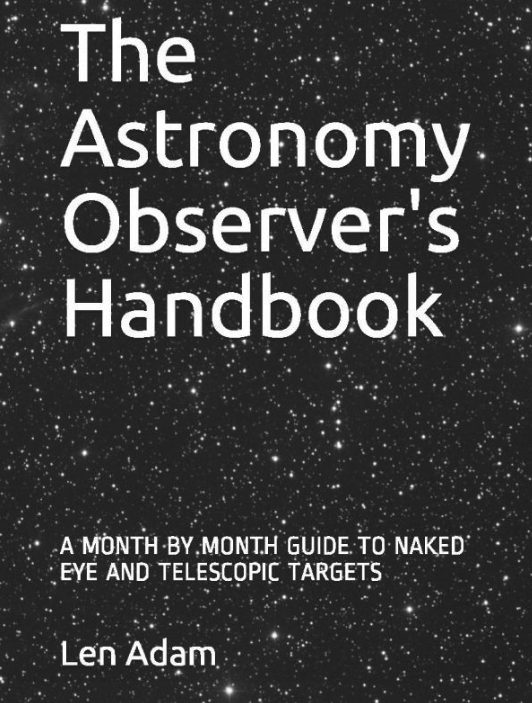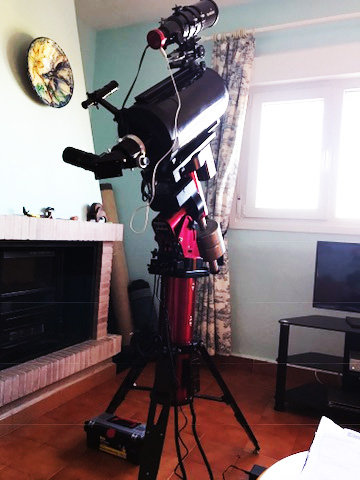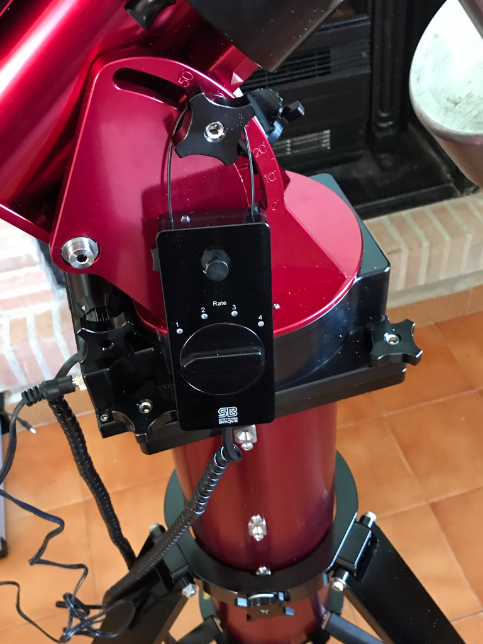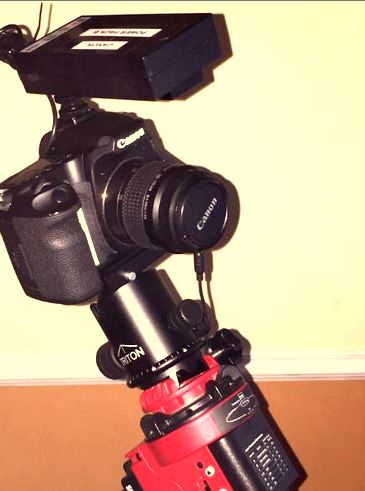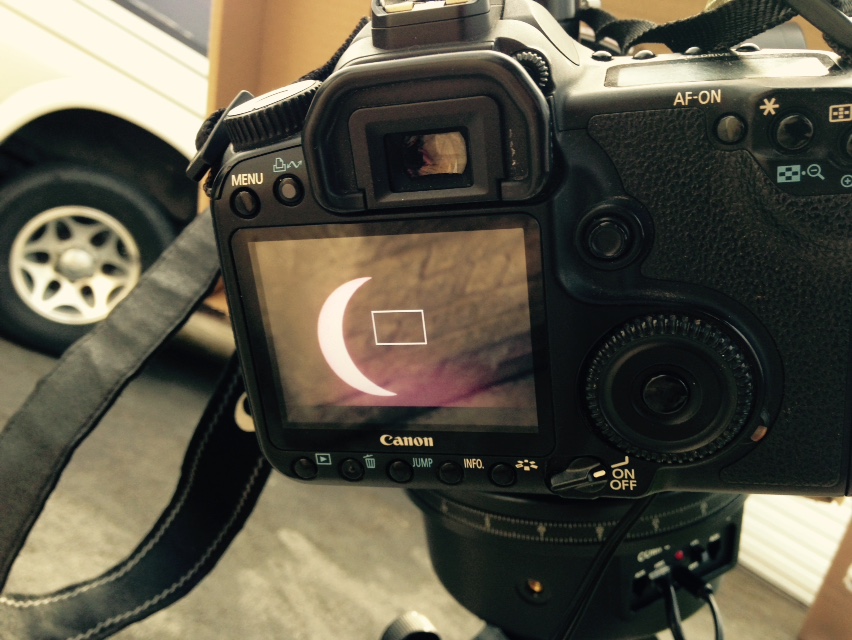Clear Skies with a message from the Sun.The Winter Triangle and the New Year Star.
 Thursday, December 31, 2015 at 11:41AM
Thursday, December 31, 2015 at 11:41AM This morning the Sun was shining and the skies were blue

For some reason the Sun was projecting the number 100 on to my hedge. Could it be that the answer to life, the universe and everything has been revised upwards from 42?
As midnight on New Years Eve in Leyland approached, the sky was clear, but at midnight the sky was filled with bangs and screeches as everyone celebrated the arrival of 2016.
Through the haze I could see the Winter Triangle clearly, with its three bright stars Sirius, Betelgeuse and Procyon.
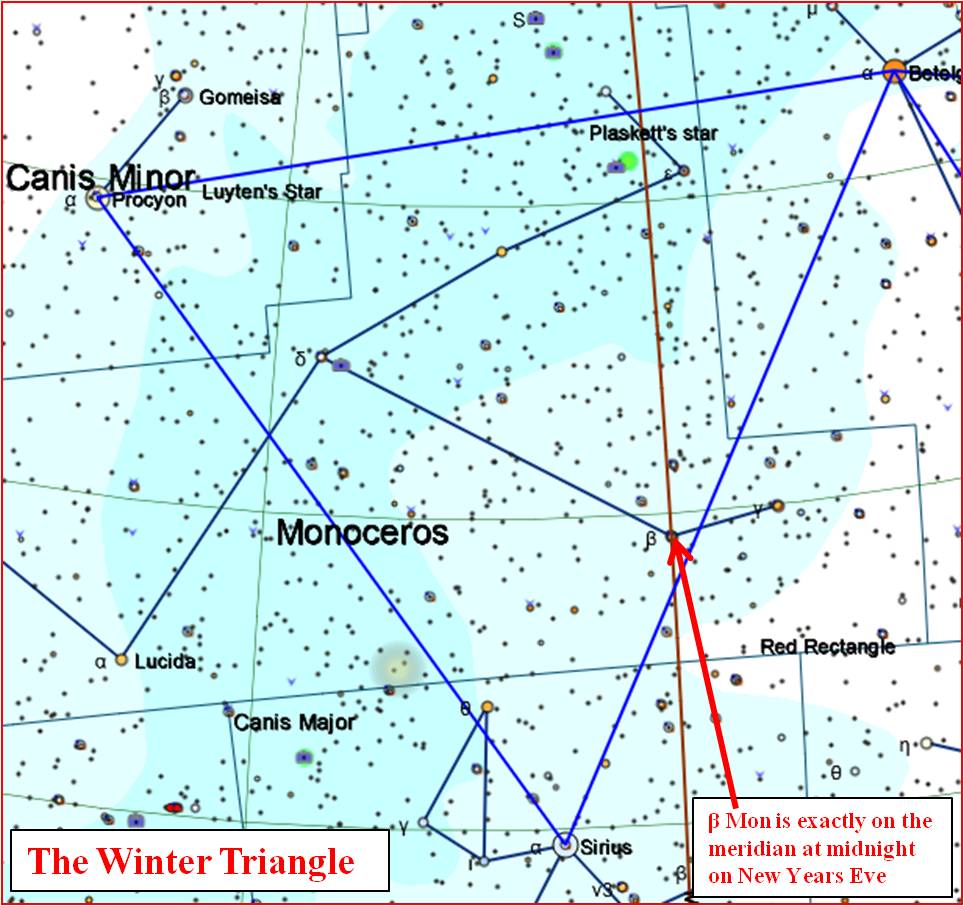 Star chart generated by TheSkyX © Software Bisque, Inc. All rights reservedThe star chart shows the Winter Triangle at midnight. Procyon is in the constellation of Canis Minor and has a magnitude of 0.4. It was at an altitude of +39° 24' 33" and an azimuth of 157° 00' 08" so it has to move by about 23° before it reaches the meridian, due south. It will cross the meridian at 01:10. Procyon has a Right Ascension of 07h 40m 10.343s at the moment (1 Jan 2016)whereas its J2000 RA was 07h 39m 17.354s. The difference of almost one minute is due to the westward movement of the First Point of Aries caused by precession over the 16 year period. Procyon lies at a distance of 11 Light Years from us and has an absolute magnitude of 2.68. It is an F5 type star so has a temperature of about 6700K and appears white. It has a white dwarf companion.
Star chart generated by TheSkyX © Software Bisque, Inc. All rights reservedThe star chart shows the Winter Triangle at midnight. Procyon is in the constellation of Canis Minor and has a magnitude of 0.4. It was at an altitude of +39° 24' 33" and an azimuth of 157° 00' 08" so it has to move by about 23° before it reaches the meridian, due south. It will cross the meridian at 01:10. Procyon has a Right Ascension of 07h 40m 10.343s at the moment (1 Jan 2016)whereas its J2000 RA was 07h 39m 17.354s. The difference of almost one minute is due to the westward movement of the First Point of Aries caused by precession over the 16 year period. Procyon lies at a distance of 11 Light Years from us and has an absolute magnitude of 2.68. It is an F5 type star so has a temperature of about 6700K and appears white. It has a white dwarf companion.
Betelgeuse is in the constellation of Orion and has a magnitude of 0.45. It was at an altitude of +43° 13' 27" when I observed it at midnight. It had an azimuth of 191° 26' 42" so was about 11° west of the meridian which now lies between Betelgeuse and Procyon. It crossed the meridian at 23:23. Betelgeuse has an RA of 05h 56m 03.602s at the moment. Betelgeuse lies at a distance of 427 LY so is much further from us than Procyon. To appear to us at roughly the same brightness as Procyon at that distance Betelgeuse must be considerably brighter intrinsically and in fact has an absolute magnitude of -5.14. It is a red giant type M2 star so is a lot cooler than Procyon at about 3600K. It is slightly variable.
Sirius is in the constellation of Canis Major and has a magnitude of -1.44. It was at an altitude of only +19° 29' 24"when I observed it at midnight. It had an azimuth of 175° 51' 45" so had just over 4° to go before culminating at the meridian at 16 minutes past midnight. Sirius has a current RA of 06h 45m 53.256s. Sirius lies at a distance of 8.6 LY and is spectral type A0 with a temperature of about 9600K so appears white. It has a white dwarf companion about the size of the Earth.
I noticed that at midnight the star β Monoceros was exactly on the meridian. The Right Ascension of this star is 06h 29m approximately. The Sidereal Time at midnight was 6h 29m as well as it is always equal to the RA currently on the meridian. The star is HIP 30852 and has a magnitude of 7.55 so was well below naked eye visibility. So every year this star arriving on the meridian at midnight means that it will be acccompanied by thise bangs and whizzes!
 [Your Name Here] | Comments Off |
[Your Name Here] | Comments Off | 
